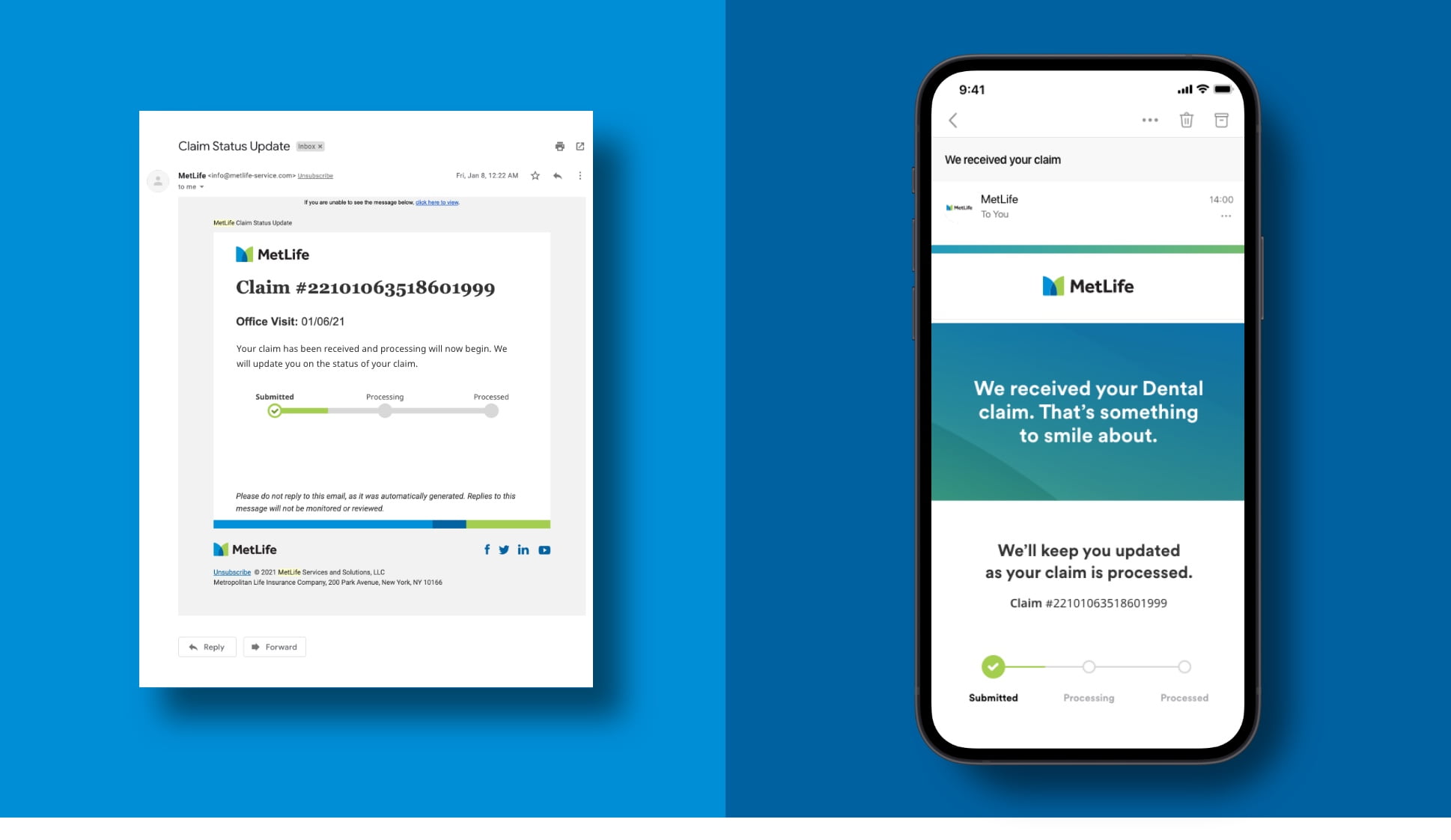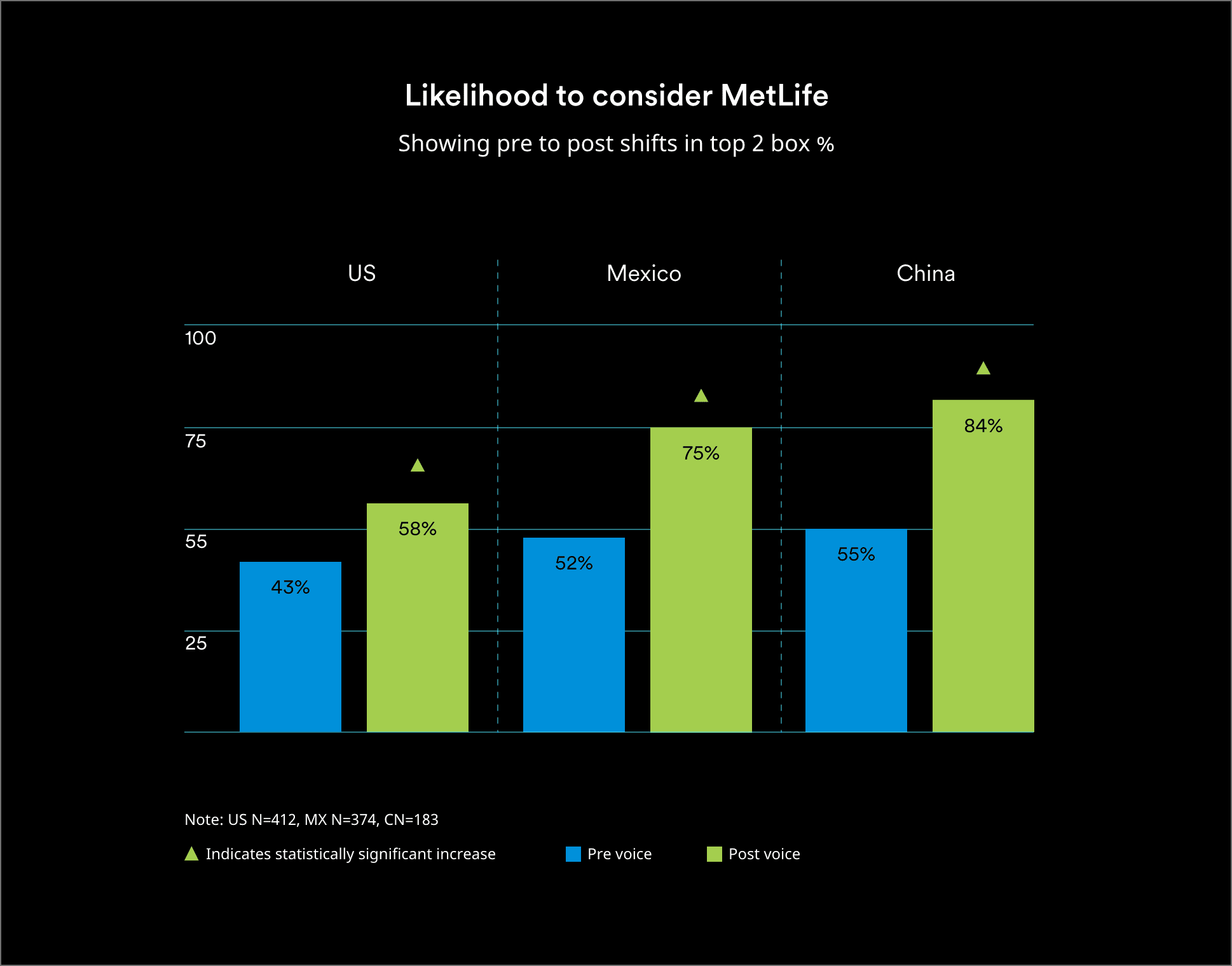STANDARDS
Tone of Voice
Overview
Our Tone of Voice is our standard for language, helping ensure that we show up as one company with a unified voice. It enables all of our audiences to understand what we stand for and why.
Standards
We are simple by using straightforward and human language.
We are insightful by incorporating relevant expertise.
We are empathetic by showing that we care and understand.
We are forward-thinking by focusing on our customers’ future possibilities.
Voice: How we speak
Our tone of voice defines how we sound to our customers.
Where it comes from
Our personality and organizational DNA.
What it informs
Our expression style, including language, syntax, pacing, rhythm, etc.
How it flexes
While our voice should be consistent across our brand, it flexes for different moments and is adapted globally to reflect the cultural and linguistic nuances of different regions.
Our Creative Philosophy
Our creative philosophy guides how we look and feel in-market. Our first step is to delve into the Clearly Human mindset. What does Clearly Human mean?
#1
Think of the delight and relief when something is much simpler than you thought it would be.
#3
Think of the satisfaction of tracking your progress against a big goal —and then finally reaching it.
#5
Think of the pleasure of someone taking the time to remember your name and your story.
#2
Think of the a-ha moment when you figure out something you’ve been struggling with.
#4
Think of the feeling of unexpected connection when you strike up a conversation with someone you’ve just met.
#6
Think of the comfort of having constant support at your side, now and into the future.
Our philosophy has a big impact on how we look and sound.
From
Taking us from sounding like a corporation…
To
…speaking and engaging as people.
Validating Our Evolved Approach
In testing, we found that our evolved approach drove higher consideration and recommendation across markets.
Guidance
Voice Principle 1: We are Simple
Use straightforward and human language.
- Define complex industry terms in everyday language so audiences feel like they’re learning but not being taught.
- Use approachable—but not overly casual—and direct language to make customers feel like they’re speaking with a peer.
- Keep sentences short enough to easily read and digest, using punctuation to break up ideas.
- Acknowledge that insurance can be complicated but pivot quickly to show how we’re making it simpler.
- When relevant, show how we’ve made experiences better or simpler for our customers.
Voice Principle 2: We are Empathetic
Show we care and understand.
- Start pieces with an emotive statement that showcases that we understand our customers’ goals, then quickly segue to how that informs our approach.
- Find moments to be candid and honest (e.g., “Actually, many people spend too much on their policy and could better use their investment.”)
- Use inclusive language to show we’re on this journey with them to give them confidence in their decisions.
- Use anecdotes to talk about milestones in the context of people’s lives and their loved ones (e.g., “Whether you’re saving to support culinary school or poetry classes…”)
- Quantify and attribute our understanding to make it real (e.g., “After talking with over 1,000 customers…”)
Voice Principle 3: We are Insightful
Incorporate relevant knowledge.
- When incorporating data or research learnings, find the “anchor” point that’s truly relevant to your audience, and contextualize it for their needs and life.
- Reframe a challenge or situation to underscore our differentiated value and new perspective (e.g., “We like to think of deductibles as.” or to focus on three main decisions…”)
- Use a simple and approachable play-on-words (e.g., “Benefit plans that benefit you— and your employees”) to create a moment of insightful connection with audiences.
Voice Principle 4: We are Forward-Thinking
Focus on our customers’ future possibilities.
- Remain focused on the positive; for example, instead of focusing on the possible impacts of floods, focus on how we help customers create a flood insurance plan that keeps them prepared and protected.
- Break down processes into manageable and clearly divided steps to show progress and how their time and energy is helping customers advance towards their goals.
- Use punctuation, pacing and sentence length to infuse a sense of energy and momentum into our writing.
- Inject unexpected language that’s action-oriented to transfer our confidence to our customers (“Let’s jump right in and get this started for you.”)
Before & After Example
Before
A variety of policy riders are available for an additional cost on permanent life insurance policies, including options for a lifetime of guaranteed monthly income for your beneficiaries and the ability to waive premiums if you’re disabled and can’t work.
What could work better
This “Before” example feels a bit clinical and cold and misses an opportunity to tell a higher-level story about our portfolio and the flexibility that we provide to our customers.
After
Adapting For Local Markets
Global guidelines need to be adapted and translated for writers in local markets.
#1
Ensure that the global brand and voice is accurately translated for and adapted to local markets.
#3
Work closely with language experts in your markets to ensure the MetLife brand and voice principles are translated accurately.
#5
Identify market-level proof points that MetLife can communicate.
#2
Consider key local market requirements when developing your market’s articulation of the global voice.
#4
Develop local language linguistic and tonal guidance to help writers deliver on the voice principles.
Localization
Tone of Voice Resources




